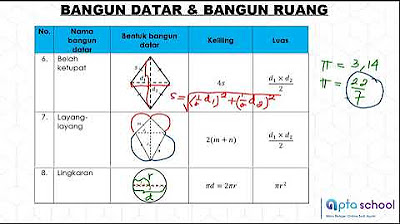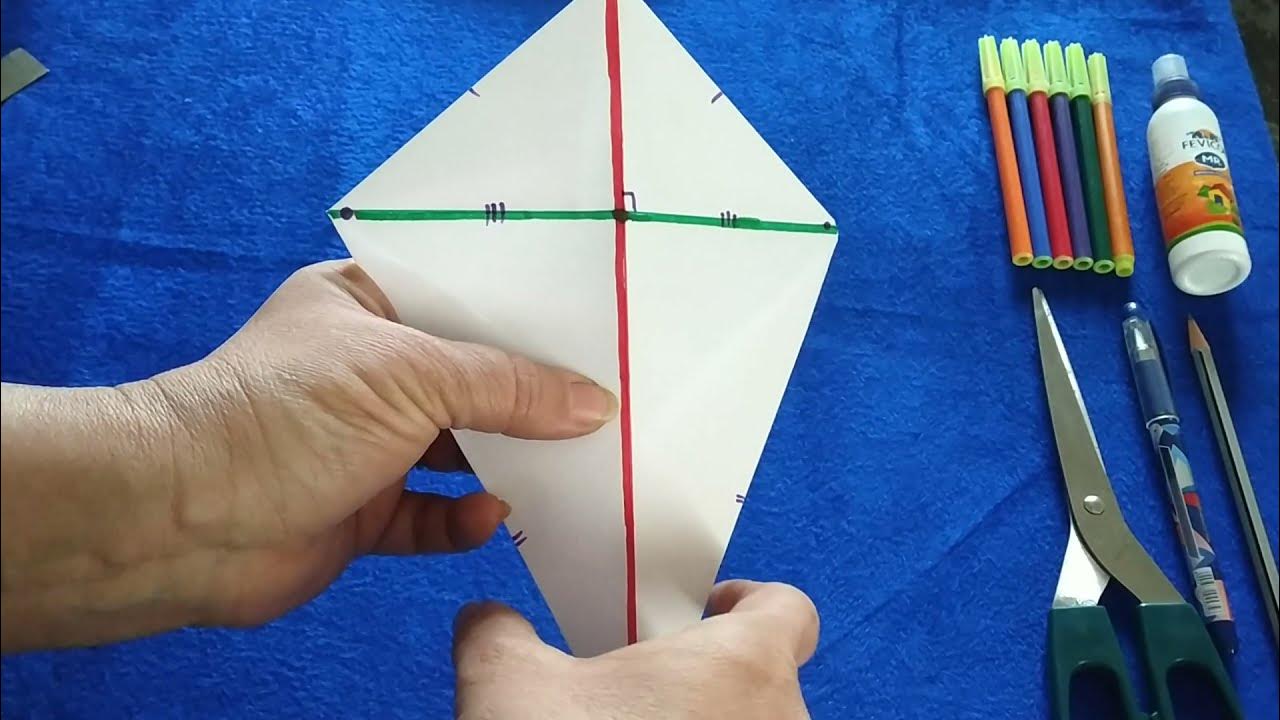Jenis -Jenis dan Sifat - Sifat Segi Empat | Matematika SMP/MTs Kelas 7
Summary
TLDRThis educational video introduces 7th-grade students to various types of quadrilaterals, including squares, rectangles, parallelograms, trapeziums, rhombuses, and kites. It explores the unique properties of each shape, such as side lengths, angles, and diagonals, offering clear examples to aid understanding. The video explains key concepts in an engaging and accessible manner, ensuring that students grasp the foundational knowledge required for further mathematical study of polygons.
Takeaways
- 😀 A rectangle has four sides with opposite sides that are equal in length and parallel, and all four angles are 90°.
- 😀 In a square, all sides are of equal length, and the diagonals are equal in length and intersect at right angles.
- 😀 A parallelogram has opposite sides that are equal in length and parallel, and opposite angles are equal.
- 😀 In a rhombus, all sides are of equal length, and its diagonals bisect each other at right angles, dividing the rhombus into symmetrical parts.
- 😀 A trapezoid has one pair of parallel sides, and the sum of the angles on the same side of the parallel sides equals 180°.
- 😀 An isosceles trapezoid has non-parallel sides that are of equal length, and the angles on the same side of the parallel sides add up to 180°.
- 😀 A kite has two pairs of adjacent sides that are of equal length, and one pair of opposite angles that are equal.
- 😀 In a kite, one of the diagonals acts as an axis of symmetry and bisects the other diagonal.
- 😀 The diagonals of a kite intersect at right angles, forming four right-angled triangles.
- 😀 The video explains the properties and classifications of various quadrilaterals such as squares, rectangles, rhombuses, parallelograms, trapezoids, and kites.
Q & A
What are the main topics discussed in this video?
-The main topics discussed are the types and properties of quadrilaterals (segiempat) and triangles (segitiga), specifically focusing on various types of quadrilaterals and their characteristics.
What are the types of quadrilaterals mentioned in the video?
-The quadrilaterals mentioned include: rectangle (persegi panjang), square (persegi), parallelogram (jajargenjang), trapezoid (trapesium), rhombus (belah ketupat), and kite (layang-layang).
What are the key properties of a rectangle?
-The key properties of a rectangle include: opposite sides being equal and parallel, all four angles being 90 degrees, and the diagonals being equal in length.
How does a square differ from a rectangle in terms of properties?
-In a square, all four sides are equal in length, while in a rectangle, only opposite sides are equal. Additionally, the diagonals of a square are perpendicular to each other, whereas in a rectangle, they are not.
What are the characteristics of a parallelogram?
-In a parallelogram, opposite sides are equal in length and parallel, opposite angles are equal, the diagonals bisect each other, and the sum of adjacent angles is 180 degrees.
What distinguishes an isosceles trapezoid from a regular trapezoid?
-An isosceles trapezoid has non-parallel sides that are equal in length, whereas in a regular trapezoid, the non-parallel sides are of unequal length.
What are the properties of a rhombus?
-A rhombus has equal-length sides, opposite angles are equal, the diagonals bisect each other at right angles, and the diagonals act as lines of symmetry.
How does a kite differ from other quadrilaterals?
-A kite has two pairs of adjacent sides that are equal, and one of its diagonals acts as an axis of symmetry. The diagonals also intersect at right angles.
What are the characteristics of a trapezoid?
-A trapezoid has one pair of parallel sides, and the sum of adjacent angles between the parallel sides is 180 degrees.
What is the significance of the diagonals in a rhombus?
-In a rhombus, the diagonals bisect each other at right angles and act as lines of symmetry, dividing the rhombus into two congruent triangles.
Outlines

此内容仅限付费用户访问。 请升级后访问。
立即升级Mindmap

此内容仅限付费用户访问。 请升级后访问。
立即升级Keywords

此内容仅限付费用户访问。 请升级后访问。
立即升级Highlights

此内容仅限付费用户访问。 请升级后访问。
立即升级Transcripts

此内容仅限付费用户访问。 请升级后访问。
立即升级浏览更多相关视频

CLASSIFICATION OF QUADRILATERALS || GRADE 9 MATHEMATICS Q3

Matematika Kelas 5 SD - Bab 4 Keliling Bangun Datar || Kurikulum Merdeka

MATERI BANGUN DATAR DAN RUANG

Types of Quadrilaterals and Other Polygons

Types & Properties of Quadrilaterals | Paper Folding Activity Guide for teachers to conduct in class

Describing 2D Shapes
5.0 / 5 (0 votes)
